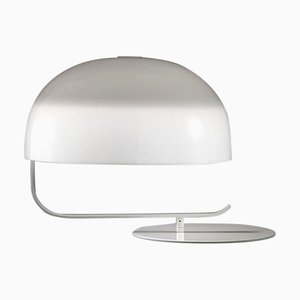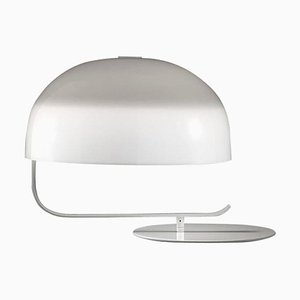
Italian architect-designer Marco Zanuso was born in Milan in 1916. After graduating from the Politecnico di Milano in 1939, he taught architecture, design, and town planning from the 1940s onwards. Zanuso opened his own architecture and design studio in Milan in 1945.
In the late 1940s, Zanuso began collaborating with Italian manufacturing company Arflex to create a furniture collection using a newly developed polyurethane foam and elastic tape. Guided by the principle that these new materials would inform the aesthetic result, Zanuso designed a series of pieces for Arflex that became icons of modernist design, including the Lady Armchair (1951)—which won the gold medal at Milan’s IX Triennale—the Sleep-o-matic Sofa (1951), the Martingala Armchair (1952), and the Fourline Armchair (1964).
Between 1957 and 1977, Zanuso maintained a partnership with German industrial designer Richard Sapper (1932-2015). Together they pioneered a new postwar aesthetic known as techno-functionalism, which evolved from a series of radios and televisions they designed. Successful designs by the pair include Lambda Chair for Gavina (1959), Doney 14 for Brionvega (1962)—the first fully-transistor television—the Grillo Telephone for Siemens (1966), and a series of mobile housing units for the landmark Italy: The New Domestic Landscape exhibition at MoMA in New York in 1972. Designs in Zanuso’s architectural repertoire include the Olivetti factory buildings in Buenos Aires and São Paulo (1955-57), the IBM factory buildings in Milan (1974), and the Piccolo Theater in Milan (1998).
As a designer who was dedicated to optimizing industriali production, Zanuso’s rationalist designs embrace experimental materials that are fully exploited to improve market accessibility. Characterized by bright colors, synthetic materials, and sculptural shapes, his work brought vanguard concepts to mass-produced consumer products. Notably, he also served as editor for both Domus and Casabella magazines. Winner of five Compasso d’Oro prizes between 1956 and 1985, Zanuso’s designs can be found in many permanent collections, including MoMA New York, the Triennale in Milan, and the Arflex Museum in Italy.
Zanuso passed away in Milan in 2001.



